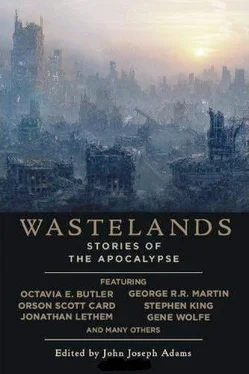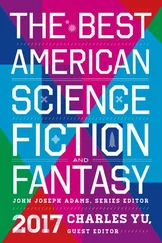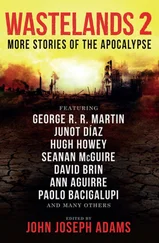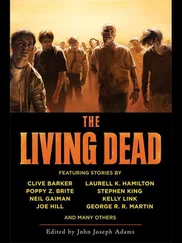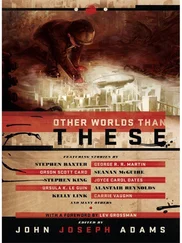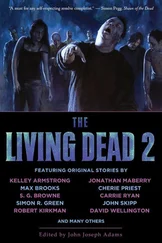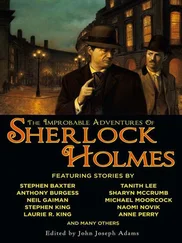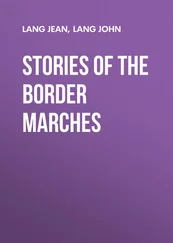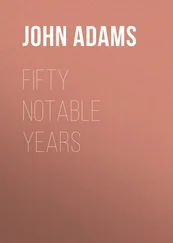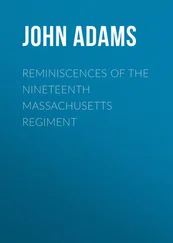For Yvonne, though, he needed to be more than a courier. The others in our pack knew Artie had an Academy girlfriend, but they assumed she was no different than the girls he fooled around with in B9-except it was somehow more exciting to get your rocks offwith some C5 princess, so the rest of the guys looked at Artie in awe. That was why, when Yvonne dumped him, he climbed the drainpipe to my room and cried in my arms.
We were never lovers, Artie and I. He never wanted me that way, and I knew better than to try enticing him. It would have been laughable: I am a homely woman, and I was an ugly child. My mother said it was the radiation I endured outside-she blamed everything on radiation-but I didn’t have to look far to find the long jaw and the close-set eyes I inherited, or the limp, colorless hair and crooked teeth. My shape, too, eschews beauty: I have a bony frame and tiny breasts. There are boys who don’t care what Slot B looks like, as long as it will accommodate Tab A, but Artie was never one of them.
So I held him the night Yvonne rejected his love, knowing this was as close to him as I would ever get. The next day he went out and built his first bicycle.
Before he graduated from Spark Academy, the counsellors there tried to push him into vocational training because he was so gifted in working with his hands: carving, moulding, welding. "Wouldn’t you be happier," they asked, "crafting components? Building machines? Turning out a product?" If Yvonne had dumped him earlier, he might have yielded to their pressure; but he had told them he could do both: design and build. With his heart torn to shreds, he needed to prove that.
It was no work of art, that first bicycle: primalloy tubes patch-welded together. But it was serviceable, and it was a start. DeRon and I took over running the courier business-we already handled the routine maintenance and repair of our pack bicycles-so Artie would have time to build. His instructors in the university engineering program derided him, he told me, for wasting his time building "toys." New robots to evacuate clogged water and sewer lines, or innovative geometries to prop up the sagging tunnels of KanHab-those were projects worthy of a mechanical engineer, they said. Not swift transportation through the unsavoury streets of lawless sectors.
But he did all they asked of him by day, and when darkness blanketed KanHab, he locked the front door of the abandoned storefront that served as our headquarters, called up his drawings, and began to build.
Artie made it his business to see that every child in B9 who kept the Code had a sleek, efficient machine that could carry him or her away from danger. The Code was fairly simple at that point: Take care of your bike and your friends; never fight when you can run; study and learn; make things better for everyone, not just yourself. Those same tenets were required of everyone in his pack.
By this time we had left thievery behind and were a legitimate business, recognized by Admin, delivering parcels and providing reconnaissance for electric cart convoys and groups of pedestrians throughout KanHab. We wore patches that showed we were part of Artie’s pack-Artie’s Angels, we called ourselves-with authorization to cross sectors and ride through public tunnels and buildings. Admin gave us helmets, gloves, and light body armour as part of our ration, and they stamped out cleats for Artie to fasten on flexible, steel-shanked shoes so we could lock into our pedals. When we rode as a pack, armoured and shod identically, people stood aside, gaping.
As our customer base expanded to other sectors, our fees originally accepted as comestibles, tools, and clothing-were paid more and more in ExCees, or Exchange Credits, flushed through habitat accounting and redeemable in rations, entertainment, or just about anything else we could want. I drew a single ration for myself and gave everything else I earned to Artie, to buy materials for the bicycles that gave the kids of B9 a chance: a chance to learn, a chance to grow, a chance to believe in the goodness and worth of other people.
But it’s hard to give hope to a dying planet.
All the time Artie was trying to make things better in B9, outside KanHab, life became more and more futile. Plants and animals died in the unfiltered sunlight, people starved to death, babies were born with mutations so horrible their own parents killed them. Brutality reigned, for life was short and ugly, and people snatched what pleasure they could; too often that meant the adrenalin rush gained by inflicting one’s will on someone or something else. How long the Reapers were a problem outside, I don’t know; but the day they broke through Security into KanHab is a day we will never forget.
They rode old combustion-engine motorcycles, powered by whatever alcohol they could manufacture to fuel them. Their philosophy was nihilistic: Earth and its inhabitants were doomed, so why not help them along the path to destruction? Whether or not they died in the process seemed of no consequence to the Reapers. Of the twenty or so who crashed the gate that day, only two made any effort to escape the certain death they found at the hands of KanHab’s defenders. But before they died, eighteen Security officers and over a hundred civilians fell to the Reapers’ projectile weapons-not to mention the people they simply rode down. Hundreds more burned to death in the fires they started.
Infrastructure at the gate, including the radiation shield, was so badly damaged that Admin sealed off the entire sector and simply built a new gate further in. They did nothing to repair the collapsed tunnels and fire-gutted buildings of A7 and 8. Why should they? Physical space was not what kept people out of KanHab, but the lack of food from our greenhouses. Housing was plentiful, and it was only residential areas the Reapers had terrorized in their eighteen-hour frenzy of destruction.
Artie got two months off from classes while he and other students helped repair the damage to the shield and other critical parts of the infrastructure. One day as we worked in C17 underground-Artie as field engineer and DeRon and I as his crew chiefs—the most strikingly beautiful woman I have ever seen approached us: tall and lithe, with high cheekbones in an oval face and dark, unblemished skin.
"Mr. D’Angelo?" she asked, and her voice was like thick cream, a smooth, rich fluid that spilled out and soaked into the thirsty air.
Artie was smitten; it was written all over his face as he stepped down from the ladder he had just mounted. "I’m Artie D’Angelo," he said.
I tried to see what Saronda was seeing: a wiry young man well shy of six feet, with a flat gut and thighs like tree trunks; dark hair clumped in curls from sweating beneath his hard hat; red-rimmed eyes and two days’ growth of beard telling how little he had done the past forty-eight hours except work to salvage something from the destruction.
But she smiled, a smile as warm and sincere as it was brilliantly white. "I’m Saronda McCabe. I understand you build bicycles."
She was an electrical engineering student, and her father worried about her travelling from her home in F3 to her practicum in C7. She thought a bicycle might be the answer. Artie agreed, provided she also got some practical training in avoiding danger-which he, of course, would be happy to provide at no charge. DeRon and I exchanged a look, then took our crew in search of some lunch while the two of them made eyes and traded compliments. "Ten ExCees he’s in her pants before morning," DeRon muttered as we turned a corner.
I didn’t think so-she was high-class stuff-but I wasn’t stupid enough to take the bet. Good thing-I would have lost.
Once Saronda’s bicycle was made, we started swinging through F3 on our morning rides to pick her up for a couple of miles, after which she and Artie would break off and go their own way-because, he said, she couldn’t keep up with us quite yet. That was true, and they did stay with us longer as she improved. But she had a housing assignment separate from her parents-her father was high up in Admin-and within a couple of months we were picking up Artie in F3, too.
Читать дальше
